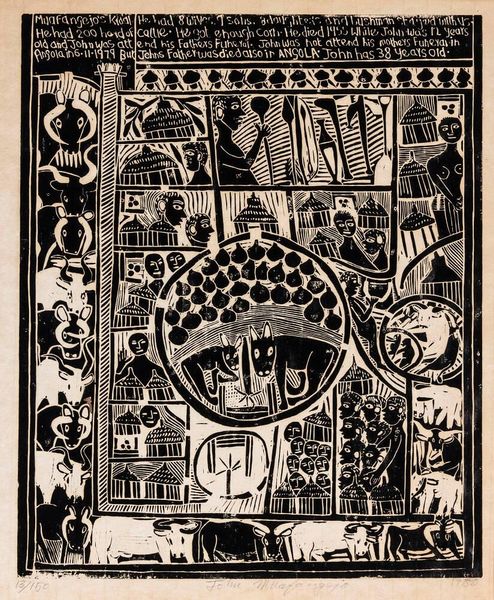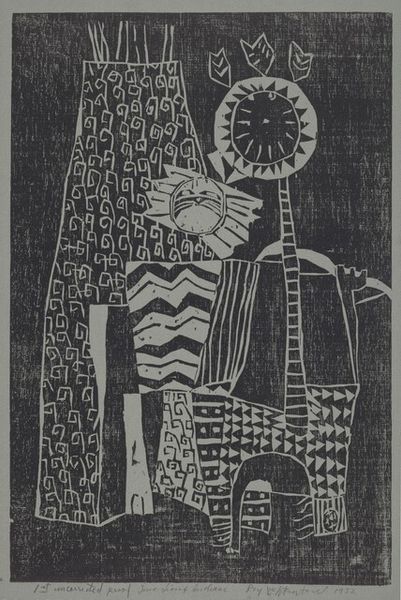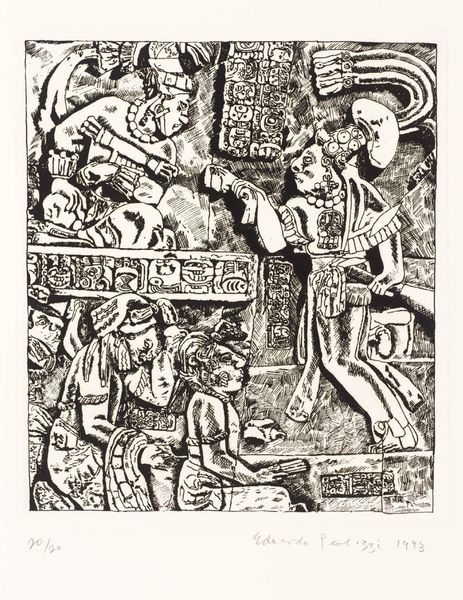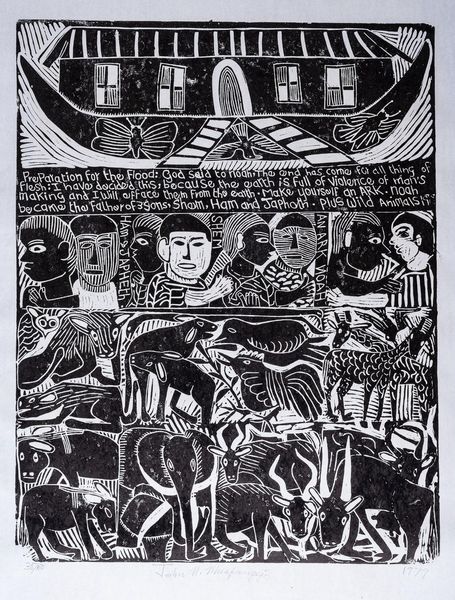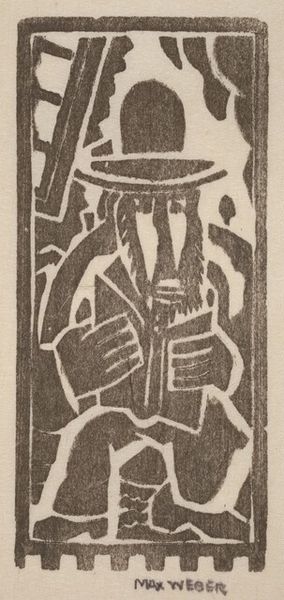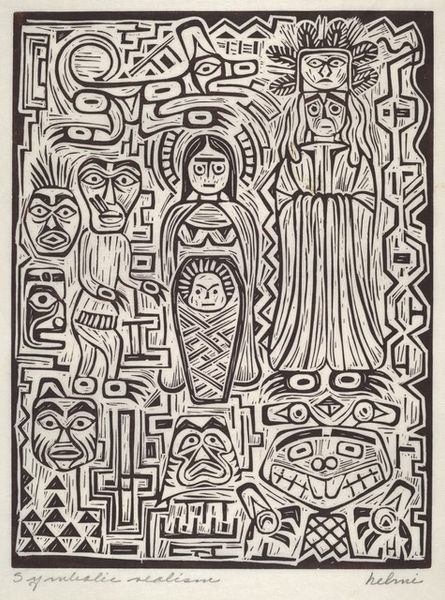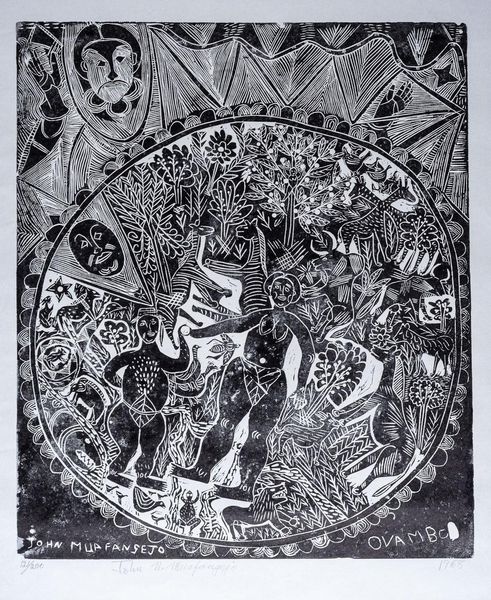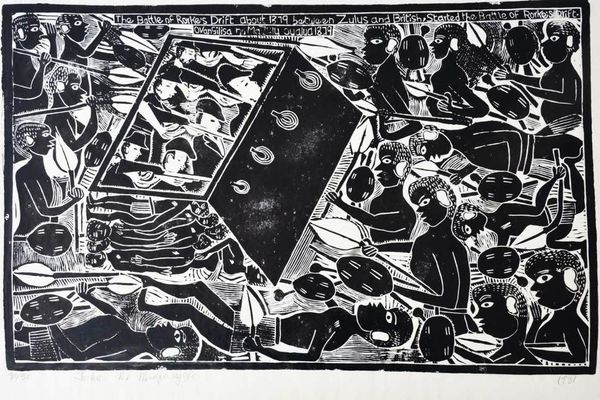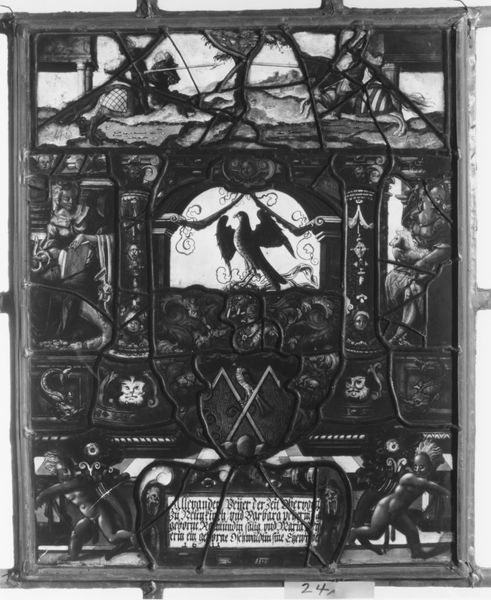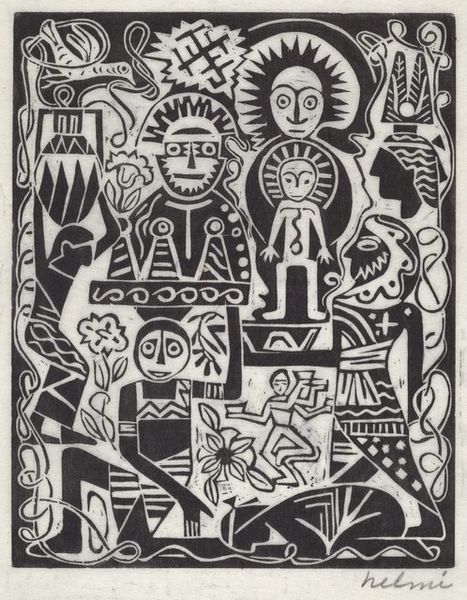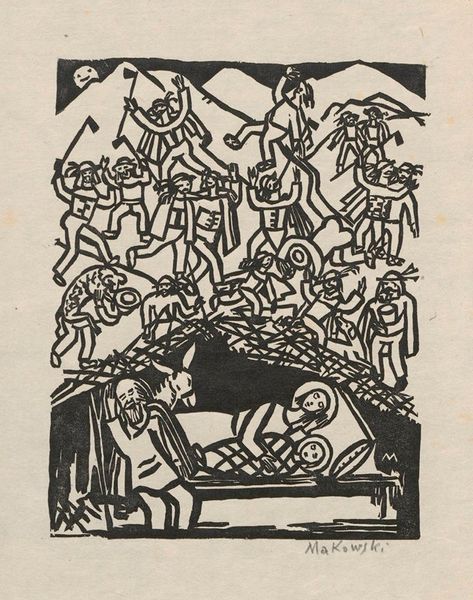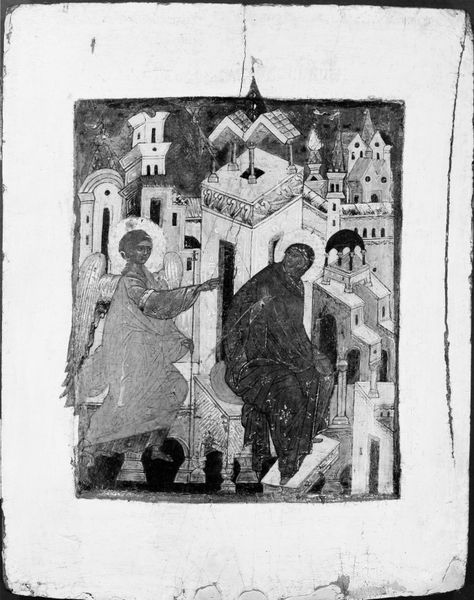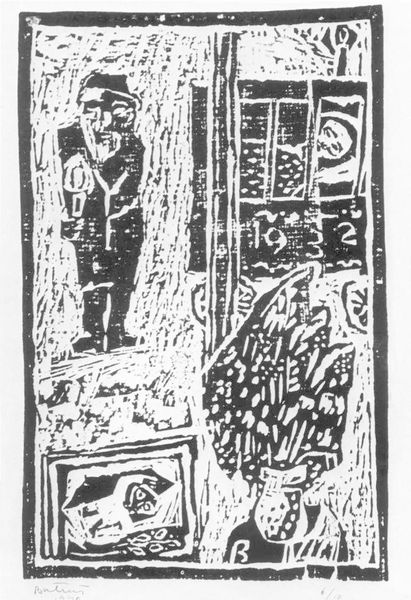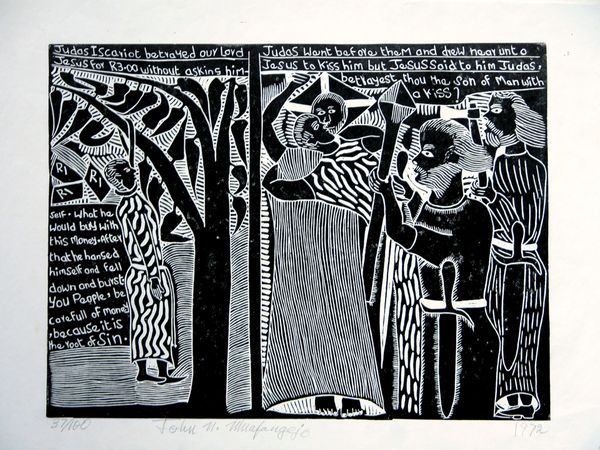
drawing, collage, print, woodcut
#
portrait
#
drawing
#
collage
#
narrative-art
# print
#
death
#
figuration
#
woodcut
#
history-painting
Dimensions: 86 x 61 cm
Copyright: John Muafangejo,Fair Use
Editor: This is John Muafangejo’s woodcut and collage print from 1982, titled "Herdman Philipus Kaluvi was died in 1982". The dense, almost folk-art style of this piece creates a really fascinating, though slightly somber, effect. It's like a visual biography. What historical layers or cultural narratives do you see in this piece? Curator: Well, it’s fascinating how Muafangejo uses the visual language of printmaking to not only commemorate an individual's life, but to weave in threads of colonial history and religious conversion. Look at how text and image are combined; it resembles a historical document, a public record even. What do you think the repetition of the buildings suggests in this narrative? Editor: Perhaps they are representative of the community Herdman belonged to? Were the church and mission central to the community in the 80s? Curator: Absolutely. Mission schools and churches played a huge role, and prints like this circulated widely, functioning almost as community announcements. Considering that, how might this work have been received and understood beyond the immediate community? Editor: Maybe it was about maintaining history, asserting a cultural narrative outside of the colonial structure? As an artwork created by someone from a historically oppressed culture it seems like a powerful testament of local history. Curator: Precisely! It pushes us to consider the museum as a stage, interrogating the stories it tells, and often, the ones it silences. Muafangejo's prints were not just art, but tools of cultural resilience and social commentary, revealing that the personal is profoundly political. Editor: It's really broadened my perspective on how art serves as both a memorial and a statement. The collision of historical narratives is much clearer to me now.
Comments
No comments
Be the first to comment and join the conversation on the ultimate creative platform.
